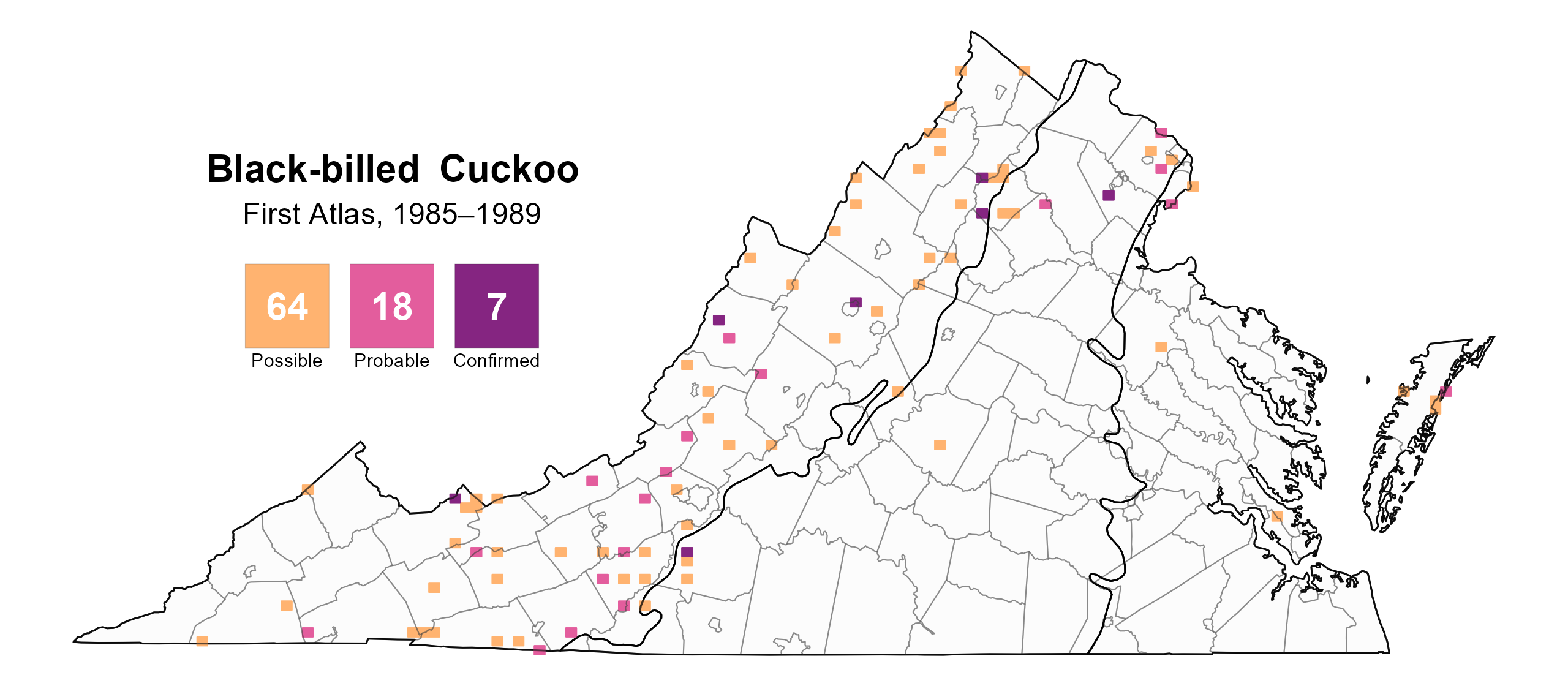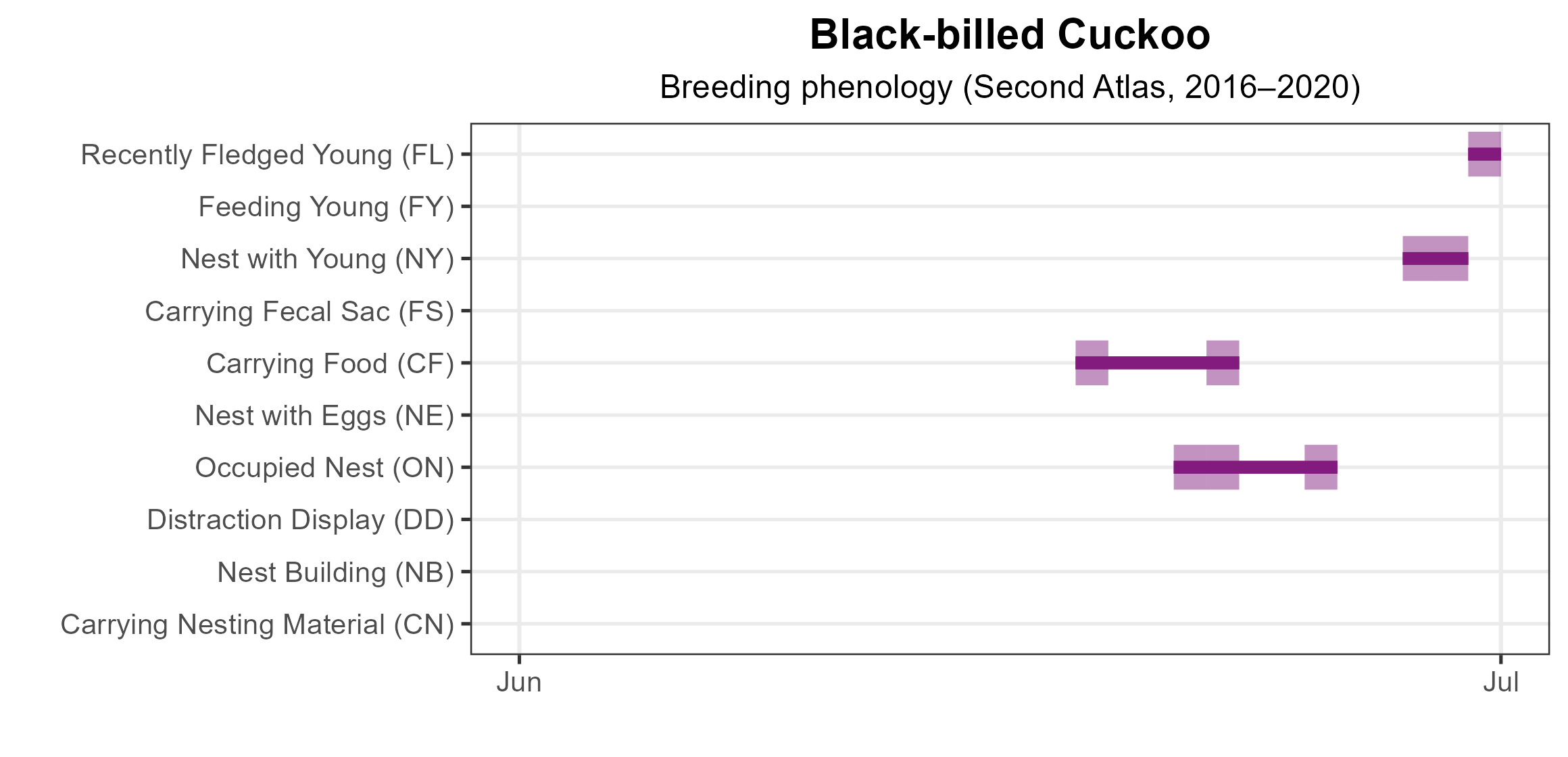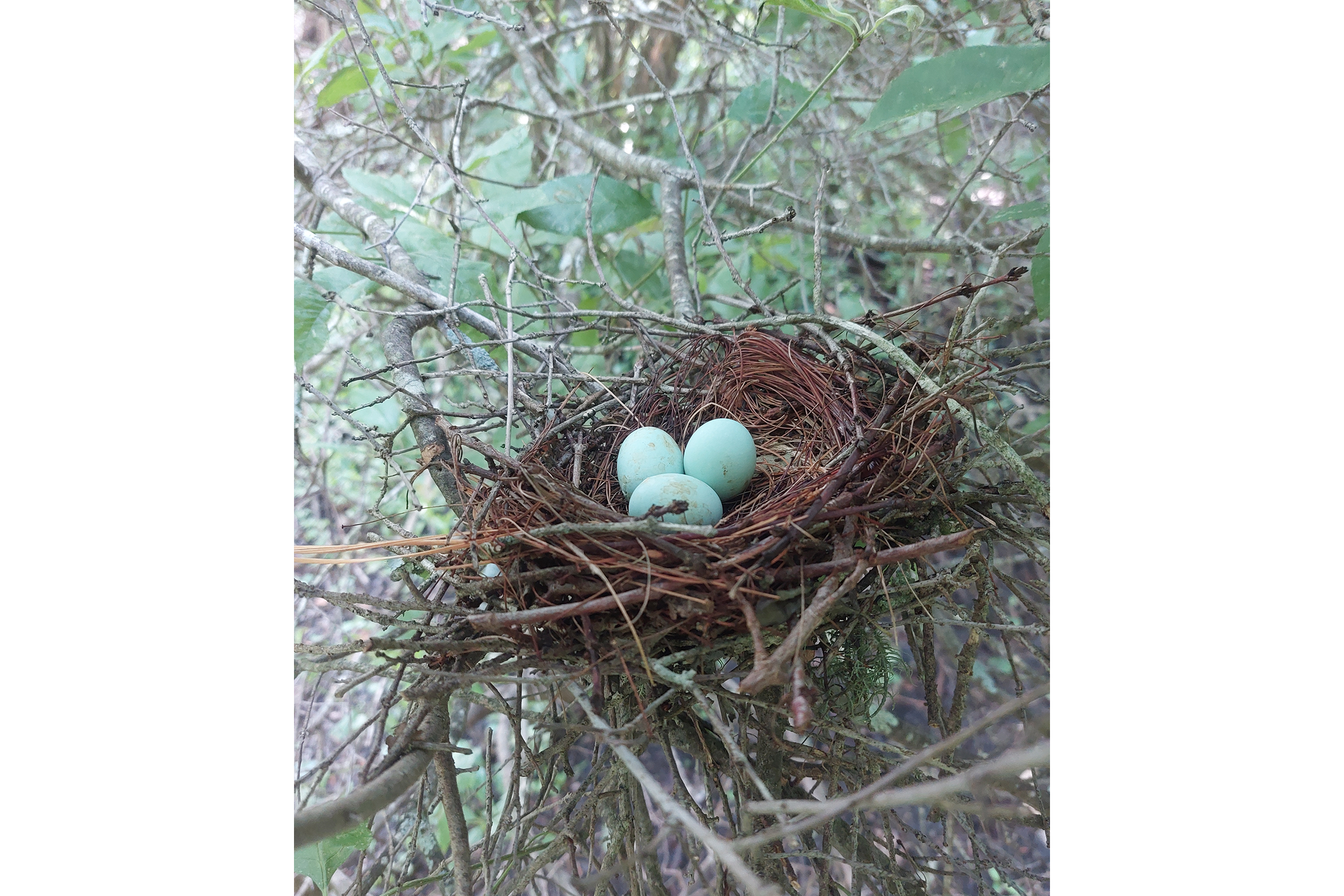Introduction
From the porch of a cabin on the Blue Ridge, you may hear a separated cu-cu-cu-cu-cu, cu-cu-cu-cu, cu-cu-cu-cu. Soon, the bird song is replaced by the sound of gentle rain on the rooftop. Like the Yellow-billed Cuckoo (Coccyzus americanus), it is often called the “rain crow” for its habit of singing just before a summer rain arrives. Hearing Black-billed Cuckoos is relatively easy; however, seeing them in Virginia’s dense forests can be difficult. They tend to skulk and sometimes perch motionless for long periods amid thick foliage (Hughes 2020), making them a more mysterious cousin to the Yellow-billed Cuckoo.
Breeding Distribution
Breeding observations of Black-billed Cuckoo were too few to develop a distribution model. For more information on where this species occurs in Virginia, please see the Breeding Evidence section.
Breeding Evidence
Black-billed Cuckoos are found sporadically in all regions of the state, with the majority occurring in the heavily forested Mountains and Valleys region (Figure 1). Black-billed Cuckoos were confirmed breeders in just three blocks and three counties. An occupied nest was discovered near Martin Kings Road in Albemarle County, recently fledged young were observed near Sunnyside Orchard Road in Rappahannock County, and an adult was observed carrying food on Paddy Knob in Highland County (Figure 3). Volunteers reported probable breeding in an additional three counties. In Montgomery and Rockingham Counties, a Black-billed Cuckoo was observed singing in appropriate habitat for more than seven days. At Fort Walker in Caroline County, a bird was noted exhibiting territorial defense behaviors. During the First Atlas, breeding observations were more numerous overall and especially in the Mountains and Valleys region (Figure 2). For more information on this species’ breeding phenology, please see All About Birds.

Figure 1: Black-billed Cuckoo breeding observations from the Second Atlas (2016–2020). The colored boxes illustrate Atlas blocks (approximately 10 mi2 [26 km2] survey units) where the species was detected. The colors show the highest breeding category recorded in a block. The numbers within the colors in the legend correspond to the number of blocks with that breeding evidence category.

Figure 2: Black-billed Cuckoo breeding observations from the First Atlas (1985–1989). The colored boxes illustrate Atlas blocks (approximately 10 mi2 [26 km2] survey units) where the species was detected. The colors show the highest breeding category recorded in a block. The numbers within the colors in the legend correspond to the number of blocks with that breeding evidence category.

Figure 3: Black-billed Cuckoo phenology: confirmed breeding codes. This graph shows a timeline of confirmed breeding behaviors. Tick marks represent individual observations of the behavior.
Population Status
There were too few Black-billed Cuckoo detections during the Atlas point count surveys to develop an abundance model. Additionally, population trend estimates from the North American Breeding Bird Survey (BBS) were not credible for Virginia or for all regions that contain Virginia.
Conservation
Virginia’s 2025 Wildlife Action Plan classifies Black-billed Cuckoo as an Assessment Priority Species because the lack of population trend data prevents it from being evaluated as a potential Species of Greatest Conservation Need (VDWR 2025). In addition, this is an under-studied species, with little information on the specific causes for their population declines. However, conservation scientists speculate that Black-billed Cuckoos are susceptible to poisoning through the consumption of caterpillars infected with pesticides (Hughes 2020). Currently, there are no species-specific conservation actions being implemented in the state, but the inability to track this species effectively through existing data sources, e.g., Virginia’s Second Breeding Bird Atlas, eBird, and BBS, underscore the need for a targeted assessment of their status and distribution.
Interactive Map
The interactive map contains up to six Atlas layers (probability of occurrence for the First and Second Atlases, change in probability of occurrence between Atlases, breeding evidence for the First and Second Atlases, and abundance for the Second Atlas) that can be viewed one at a time. To view an Atlas map layer, mouse over the layer box in the upper left. County lines and physiographic regional boundaries (Mountains and Valleys, Piedmont, and Coastal Plain) can be turned on and off by checking or unchecking the box below the layer box. Within the map window, users can hover on a block to see its value for each layer and pan and zoom to see roads, towns, and other features of interest that are visible beneath a selected layer.
View Interactive Map in Full Screen
References
Hughes, J. M. (2020). Black-billed Cuckoo (Coccyzus erythropthalmus), version 1.0. In Birds of the World (P. G. Rodewald, Editor). Cornell Lab of Ornithology, Ithaca, NY, USA. https://doi.org/10.2173/bow.bkbcuc.01.
Virginia Department of Wildlife Resources (VDWR) (2025). Virginia wildlife action plan. Virginia Department of Wildlife Resources, Henrico, VA, USA. 506 pp.





